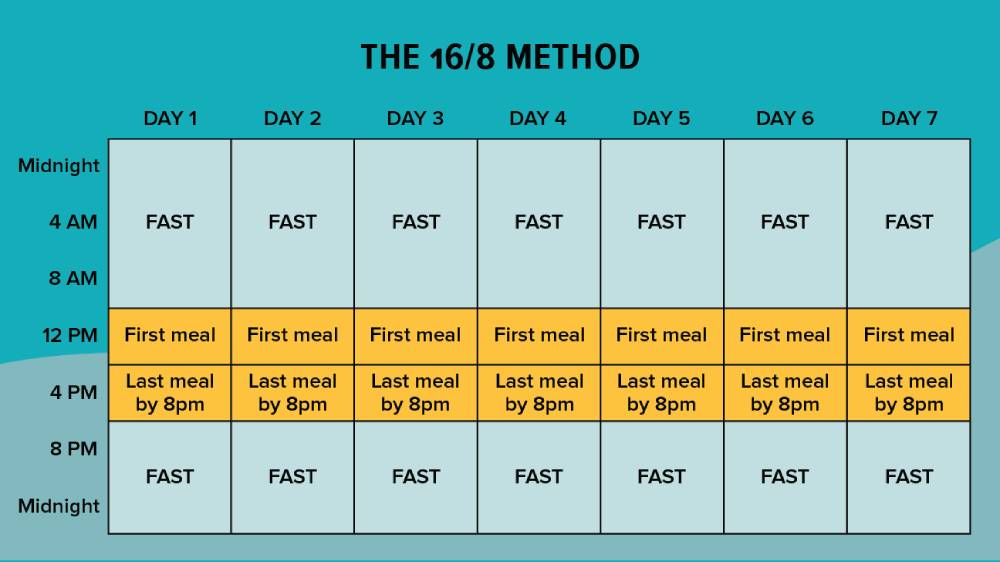Have you ever been constantly looking to find the best, most successful diet for long term weight loss? Do you still desire to consume the foods you like rather than obsess over everything you put in your mouth? Let’s discuss the intermittent fasting diet.
The intermittent fasting diet lets you burn off fat and is more successful for weight reduction in the long term when compared to a calorie restrictive diet.
Article index
This article has been broken down into unique sections to help you. You can either click and go straight to that section, or simply scroll down to read this article in full.
- What is the intermittent fasting diet?
- How to time your intermittent fasting
- Lose Stubborn Belly Fat
- Intermittent fasting gains
- Surprising health benefits of this fasting diet
- How can I start intermittent fasting?
- Further intermittent fasting tips and tricks
- My own encounter with intermittent fasting
- Tony tries the Alternate Day Fasting approach
- Lessons from Tony’s Alternate Day Fasting Experience
- Wrapping up
What is the intermittent fasting diet?
Intermittent fasting diet entails a period of time of not eating (fasting) switched with then a period of eating. Water is generally allowed within the fasting period however no calories. The main element to Intermittent fasting diet is that it really permits you to eat at caloric shortfall while not pushing one to avoid specific foods.
Intermittent fasting is often referred to as a lifestyle instead of a traditional diet. In lay terms, it is essentially an alternation between periods of fasting (where no calories are to be consumed) and feeding periods (a set period of time in which you consume all your calories for the day).
Most people who commit to intermittent fasting typically do so as a method to lose weight, however there are other health benefits that I will cover further below.
As an aside, the best technique for losing weight is making a calorie restriction. That means eating less than your body burns on a daily basis within the long term. It isn’t simply to do with swapping endless temptations like ice cream, pizza, and booze for eating more fruit and vegetables. Also, exercise can only burn so many calories. So, you actually have to concentrate in your diet to lose excess weight.
How to time your intermittent fasting
The length of the feeding and fasting period is often debated, and different intermittent fasting protocols use different times. However, the fasting period is typically longer than the feeding period. Below are three variations to the fasting/feeding period:
16/8 – Fast 16 hours, feeding window of 8 hours (e.g. LeanGains)
20/4 – Fast 20 hours, feeding window of 4 hours (e.g. Warrior Diet)
Alternate day fasting (~500-600 calories for 24 hours, then feeding period where anything goes for 24 hours)
Note: The numbers posted above are primarily for men. Women may have certain health risks associated with fasting and in general should not fast as long as men.

Don’t stress out too much on the “perfect” fasting or feeding period length. Whatever you choose to do, the most important thing is to be consistent. For example, if you go with a 16/8 protocol and decide that your feeding period should last from 12pm-8pm (and the rest of the time you are fasting), adhere to this schedule as closely as you can every day.
Apart from the frequency of fasting, there’s one primary difference between the tactics. In the day-to-day fasting strategy, you eat a complete day’s worth of calories throughout your eating window. In the 24 hour fasting strategy, you eat a routine sized meal before as well as following your fast, efficiently removing calories as opposed to lumping them into one 4-8 hour time frame.
If you managed to only fast for 15 hours before consuming some calories and your intention was to fast for 16 hours, relax. It’s not the end of the world, especially if this was only a one-time thing.
Again, the most important thing is consistency over time – a few blips over a long period of time is still a net positive, just don’t make it a habit.

Lose Stubborn Belly Fat
An intermittent fasting diet was initially started by me since I aimed to lose a couple of kilograms of stubborn belly fat. Eat Quit Eat helped me successfully decrease my reliance on food and lose that extra weight. I no longer feel Im a slave to eating around meal times. I eat when I am starving, not because I’m conditioned to eat at specific times.
I’d strongly urge you give Intermittent fasting diet a go. It may need more than one attempt, however you’re going to shed weight. Moreover, without any special food limitations, it is not going to adversely impact your lifestyle, which means that you shouldn’t have any trouble sticking with this so called diet in the long term.
In my estimation, this makes Intermittent fasting diet the greatest, most successful diet for long term weight loss.
During the years, many studies reported that fasting, especially intermittent fasting, which is known as abstaining or lowering the amount of food and drink intake periodically – is beneficial for us and thereby making it one of the most impressive as well as common diets worldwide.
In fact, while a large number of people have to deal with the foods they eat, before thinking of reducing the number of meals, intermittent fasting is one of the great diet providers that help you with huge benefits. It is also another method that you can experiment you achieve your weight goals.
Intermittent fasting gains
There are many advantages to fasting. Fat reduction being the most apparent advantage. Fasting forces the body to use stored fat as a way of creating energy. Moreover, assuming you don’t compensate for a fast by overeating, your weekly calorie consumption will fall over the whole of a week allowing you to lose approximately 1-2 kilograms each week.
Another advantage is the fact that fasting substantially reduces insulin measures within the body. Fasting has been proven to raise HGH (human growth hormone) levels, which further hasten fat burning without reduction of muscle mass.
Despite public awareness, Intermittent fasting diet does not result in a slow down in metabolism. More importantly, while following an Intermittent fasting diet diet, you are able to keep or even obtain lean muscle mass by simply performing resistance training.
Surprising health benefits of this fasting diet
What are the exact benefits that intermittent fasting provides?
Good question. I could write a whole book on the scientific results, however to save you from that, here are a few:
- Reduces blood glucose and insulin levels
- Rapid weight loss
- Preservation of lean muscle mass
- Lowers blood pressure
- Lowers inflammation
- Reduction in oxidative stress
- Increased energy and focus
Intermittent fasting can cause weight loss of 3-8% over 3-24 weeks (Source).
Here’s the big one: Meal flexibility. Can eat bigger, satisfying, full meals instead of 6-8 small, unsatisfying meals every 2-3 hours or whatever the other weight-loss approaches recommend.

Following are 6 surprising fasting benefits that should be paid fully consideration.
Fasting Benefits 1: Promote Weight Loss
One of the easiest things that fasting health benefits can bring about is promoting weight loss. Of course, it is. Fasting is considered as one of the safest way to reduce weight as many studies suggested. Intermittent fasting, fasting that is controlled within a set number of hours let the body burn through fat cells more effectively than regular dieting does.
In addition, this fasting allows the body to use fat as one of its primary sources of energy instead of sugar. As a result, many athletes use fasting as potential means to hit the low body fat percentages. Fasting is the best answer on how to lose weight fast.
Fasting Benefits 2: Accelerate the process of The Metabolism
As you might probably know that intermittent fasting can offer your digestive system a rest, and thereby energising your metabolism to burn through calories more effectively. In case that your digestion is poor, this can have a positive impact on your ability to metabolise food and burn fat quickly.
Intermittent fasting can additionally organise and regulate your digestion as well as strengthen healthy bowel function, and then boosting your metabolic function.
Fasting Benefits 3: Boost Eating Patterns
Intermediate fasting can be a helpful solution for those who are undergoing with binge eating disorders, and for those who are finding hard to establish a correct eating pattern because of work and other priorities.
With this solution that going all afternoon without a meal is fine and make you eat at a set time that is reasonable for your lifestyle. In addition, if you want to prevent binge eating, you can set up set time when you allow yourself to consume your daily amount of calories in one sitting, and then not stop eating until the next day.
Fasting Benefits 4: Clear the Skin And Prevent Acne
Among fasting health benefits that can make you surprised, clearing the skin as well as preventing acne are effectively treated thanks to fasting. It can help clear the skin because it is able to concentrate its regenerative energies on other systems.
If there is no meal for just one day, this can help the body clean up the toxins and regulate the functioning of other organs of the body such as liver, your kidneys and other parts.
Fasting Benefits 5: Promote Longevity
You can believe or not however the less you eat, the longer you survive. According to some studies, they have reported that the lifespan of people in certain cultures can have increased effect owing to their diets.
One of the major impacts of ageing is slowing down metabolism. As a result, the younger your body is, the faster and more efficient your metabolism can be.
Fasting Benefits 6: Encourage Self-Enlightenment
Fasting can encourage many people to feel more closer to life during their meditation practice or whilst doing yoga and martial arts etc. When there is no food in the digestive system, this makes room for more energy in the body. Fasting for self-enlightenment lets us feel better both consciously and physically.
You apparently become more aware and grateful for the surrounding things thanks to having an attractive body and an open mind.
Short-term fasting actually increases your metabolic rate by 3.6-14%, helping you burn even more calories. (Source).
How can I start intermittent fasting?
Very simple. Pick a fasting protocol that fits into your schedule (e.g. 16/8, 20/4) and determine when you want your feeding period to be. You can be extremely flexible with this – eating at night is fine too. Just make sure you can adhere to this schedule every day.
Okay, so now you know when your feeding period is. What now? Well, you can start fasting right now! (Or pick a day to start, however why wait?) Don’t eat any calories until you enter your feeding period. Once fasting is over, you consume all the calories you need for the day during the feeding window.
For someone doing the 16/8 approach for example, they may have a large meal at 12pm and a second large meal just before 8pm (Note: If you intend on eating only two meals a day, the implication is that those two meals are very LARGE meals, i.e. ~800-1000+ calories). But, again, this is flexible.
If you’re the type to nibble on snacks throughout the day, that’s technically fine too (though you will probably not feel as full or satisfied). Just make sure you stop consuming calories once your feeding window is over.
And that’s pretty much it. The steps to follow are pretty easy. Full compliance with it, however, can be challenging at first.
Further intermittent fasting tips and tricks
It is highly recommended to consume fewer large meals rather than many small ones. This is because a larger (and protein rich) meal will sate your hunger for much longer and is also much more satisfying. This is important because you will not as easily have the nagging feeling to snack during your fasting periods, and therefore adherence to IF will be more successful.
The team at FitnessVolt have an amazing Intermittent Fasting Calculator, which will definitely help you reach your goals.
The feeding window is NOT a time to eat whatever you want. IF does not cover dieting as that is another topic entirely (one this website will cover generally). But, if you think the feeding window is a time for binge eating, then you probably will not have much success with the IF lifestyle.
If you really want to lose weight and be healthier, you still need to exercise more often, and eat less junk food. IF is not a magical protocol that fixes all of your problems while you are eating poorly. Stop eating McDonald’s every day for some real benefits.
Yes, it is okay to consume foods during the fasting period as long as they are 0 calories. Things like diet sodas, black coffee, supplements, etc., which have 0 or negligible amounts of calories (i.e. <10) can be ingested during the fasting period without breaking the fast.
It’s okay if your stomach starts to growl and you feel hunger pangs while you still have many hours left until your feeding window. Don’t be worried. Nothing bad is happening to you. In fact, you would need to be without food for 48-72 hours before any real damage will begin to occur to your body as a result of fasting.

My own encounter with intermittent fasting
I used to be blinded by the anxiety about a slow down in metabolism and thus ate six meals every day. Brad Pilon’s Eat Quit Eat helped me break that anxiety. Eat Quit Eat integrates a 24 hour fast a couple of times each week. I took a slow strategy by stopping eating after breakfast, then snack, dinner, and eventually lunch on 2 days each week. The largest challenge was removing lunch as my body was conditioned to eat between 12:30 and 11:30 every day.
Now I fast twice weekly on Monday and Friday. It only means that I eliminate late night snacks on Sunday and Thursday nights and skip breakfast and lunch on Monday and Friday. This permits me to lose fat while still loving some “sin” foods in moderation. Healthy eating is important however having the ability to “cheat” while on a diet is the thing that enables Intermittent fasting diet to be a long term weight-loss option.
Tony tries the Alternate Day Fasting approach
Tony tried Alternate Day Fasting for a week to discover whether it was sustainable as a way of eating and whether there were any major side effects. This is his story.
As a thirty-something-ish male, not eating is just something that doesn’t come naturally. The idea of going without any form of nutrition for a few hours, let alone a whole day seemed unbearable. In fact, if I don’t eat regularly it affects my mood, so I was thoroughly intrigued as to what would happen when I tried Alternate Day Fasting.
After watching the BBC Horizon documentary, I felt I really wanted to try Alternate Day Fasting and not just because of the weight loss benefits. There was something inside me that wanted to know whether withholding food from your body does make your more alert and sharper, the evolutionary basis being that a shortage of food focuses the mind.
The great thing about Alternate Day Fasting was the total lack of planning around starting. No buying cook books, fancy ingredients or planning calorie controlled meals at regular intervals. No umming and arrghing over whether I could eat this or that. The rule is simply: don’t eat anything within the 24 hour period. Don’t eat – there is such beauty in the simplicity of that one rule.
It seemed natural to start on a Monday and see how my first 24 hours went. I was going to try a full 24 hours of fasting, from morning to morning, although it actually worked out as quite a few hours longer.
Monday
Having last eaten at 10pm on Sunday night, I would be going through the whole of Monday and not eating again until Tuesday at 7am.
A recent Harvard study also reveals how intermittent fasting may slow the ageing process through weight loss, lower blood pressure and reduced cholesterol. (Source)
Halfway through Monday morning, the hunger pangs were becoming stronger and stronger and I seriously wondered how I was going to cope. When this started, I stocked up on Rooibos tea and drank more water as the hunger increased. Then all of a sudden the hunger just stopped.
It was if I had broken through a wall of some sort and my body had realised it wasn’t going to be fed, so just stopped growling. I didn’t even feel as though I wanted to eat something. That didn’t change as the day dragged on and even by the evening I wasn’t desperate to eat something. I thought a fall was coming, however nothing happened.
By the time I went to bed, I was relaxed and ready to sleep. My sleep wasn’t in any way interrupted by hunger pangs or a growling stomach.
Tuesday
When I woke on Tuesday morning, there was no desperate desire for food. My body clearly enjoyed it when it received nutrition at around 7.30am, however in the end I could only eat half the cereal I normally would.
I decided at this point to carry the Alternate Day Fasting diet through to the end of the week.
I was keen to not be scientific about the diet in any way so didn’t make an effort to count calories or track what I ate on the off days (the days I was not fasting). It felt as though I ate slightly more than I would on a normal day although not by much. I was in bed that night around 11pm with my last food taken in at around 9.30pm.
Wednesday
Wednesday, as a fasting day, started off well and just remained the same. I had been nervous about something going awry at some point. Feeling dizzy or in pain from the hunger, something would surely scupper the experiment that had been going so well? No, nothing. There were noticeable effects from fasting, some of which are obvious:
I felt lighter. It is amazing how much slimmer and fitter you feel simply by not having food in your stomach and feeling bloated and heavy.
I felt more energised. Eating a heavy meal, then slumping on the sofa is a sure way to put on weight. I didn’t feel like I wanted to while away my evenings on the sofa and found myself reading or doing something more productive.
I felt healthier. No indigestion, no dehydration – mainly because I kept drinking water throughout to stave off the hunger – and generally no side-effects.
Lots of water and tea saw me through to the end of Wednesday with a good night’s sleep to finish the day off.
Thursday
Thursday was more of the same. As an off-day I was able to eat what I wanted and this time I felt even less hungry during the day than on Tuesday. In fact, it felt as though I ate less than I would have normally, even taking into account I hadn’t eaten the day before!
Friday
Which made Friday a doddle as my final day of fasting during the week. The plummet never came and I never felt hungry.
Saturday
I decided as Saturday rolled round to test whether alternate day fasting and running made a sensible combination. In my head, I thought it may be pushing it too far, going for a medium distance run off the back of 24 hours of fasting. Actually, written down it sounds like madness….
But, I was preparing for it to be a painful experience and it wasn’t. A 10 kilometre run on an empty stomach was not a problem to me. Anything longer may have been a struggle as I was beginning to feel a pang or two towards the end of the run.
Sunday
When I returned I ate breakfast as normal and thanks to plenty of water, I enjoyed a perfectly fine weekend with no noticeable side effects from 5 days of Alternate Day Fasting.
Lessons from Tony’s Alternate Day Fasting Experience
So the question is…was it worth it?
Most definitely yes, however perhaps not for the reasons most people would try ADF. In weight loss terms, I felt lighter throughout the week and by the weekend I had lost 2 kilograms. This may have been down to actual lack of food in my stomach, however that should be mitigated against the amount of water I was taking on. By the start of the following week, I had put a couple of kilograms back on.
It was the other aspects of Alternate Day Fasting that I liked, though. The simplicity of the diet: don’t eat ANYTHING. I also really felt it did have an impact on my concentration and focus, and there was a feeling that I was more alert and focused. Whether that is psychosomatic or not is difficult to tell, however it definitely felt like a mood improver.
As for weight loss, it is difficult to judge. By Saturday I found myself having lost only 2 or 3 kilograms during the course of the week, which could just be attributed to having less food physically in your stomach. In fact, by the end of Sunday I had gained a couple of kilograms back.
Drinking lots of water can help sate your hunger.
You can run while Alternate Day Fasting as long as this is timed correctly and you eat afterwards. Do not run on a fasting day when you can’t eat anything after the run.
Wrapping up: Intermittent fasting diet
If like me you had to identify one of the greatest issues you’ve got with any diet you try. Probably, it’s that you can not stick with it over the long term. Low fat, low carb, low calorie, and also other fad diets work well in the short term. Yet, they interfere with our lifestyle, and eventually we’re not able to follow them unless we’re incredibly disciplined or obsess over every meal.
Personally, I wish to savour life along with the amazing selection of foods accessible. Intermittent fasting diet enables me to do this.






